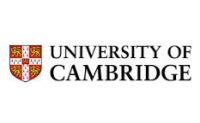






We will start by investigating what biodiversity actually is and where it can be found. This will include a look at the processes that drive the evolution of a new species and what we mean by the term ‘species’. We will learn why islands are special and often contain large numbers of species that are not found anywhere else. We will also investigate why there are generally more species per area nearer the equator and progressively fewer the further you travel to the north and south. The later parts of the course will get slightly more depressing. We will start by tracking some of the extinction events that have occurred in recent millennia and why most of the really large mammals and birds have disappeared from the world over the last 40,000 years. As Alfred Russell Wallace, the co-discoverer of Natural Selection put it “we live in a zoologically impoverished world, from which all the hugest, and fiercest, and strangest forms have recently disappeared” (Alfred Russell Wallace, 1876). We will learn about more recent extinction events and reductions in the ranges and abundances that have and are occurring in even common species. To document this we will rely on data from museum specimens that provide an invaluable record of the distribution of species collected in decades past. We will also investigate more recent attempts to catalogue changes in the distribution of groups of species over large areas, relying on the work of dedicated volunteers.
| Number | Duration |
|---|---|
| 1 | week |
-